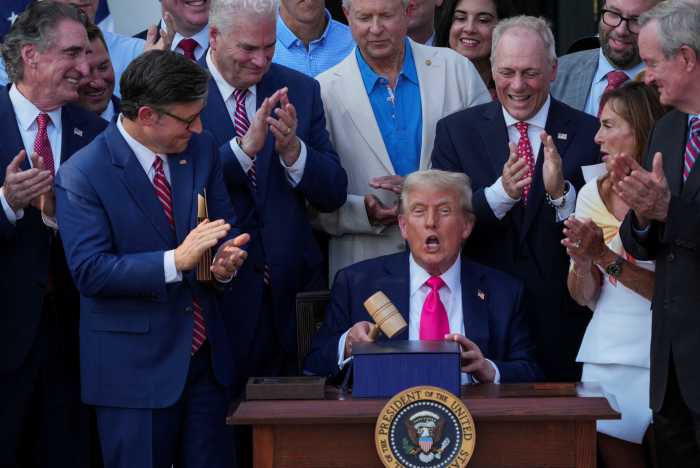
BY DENNIS LYNCH | The Landmarks Preservation Commission recently decided not to landmark a handful of three-story 19th-century homes on E. Seventh St. to the dismay of local preservationists who argued they were deserving for their architecture and place in New York City political history.
Preservationists launched their effort to landmark the buildings in September after the owner of 264 E. Seventh St. applied for a permit to demolish the entire structure. L.P.C. had determined eight years ago that all five of the buildings “appear to be an L.P.C.-eligible historic district,” yet never designated them, according to the Greenwich Village Society for Historic Preservation. Andrew Berman, G.V.S.H.P. executive director, wants to know why.
“Nothing has changed since then,” Berman said, “and they haven’t offered an explanation as to why, unsolicited in 2008, they found those buildings to be worthy of designation then, but now do not think they should be saved.”
According to an L.P.C. spokesperson, the buildings were part of an “environmental review” process for a 2008 rezoning by the Department of City Planning, at which time they were tagged as “a potentially eligible historic resource.” As the lead agency, Planning had to flag the buildings’ potential eligibility.
However, the spokesperson said, “After more research and analysis of the E. Seventh St. sites to determine L.P.C. eligibility in 2016, the agency determined that the buildings submitted for individual and historic district consideration did not rise to the level of New York City landmarks.”
Yet, those in favor of the landmarking contended that the homes deserved protected status because they are the “last remaining” stretch of Greek Revival row houses surviving from the 19th-century “Dry Dock District,” when the neighborhood was a shipbuilding hub. Also, they noted, a number of prominent politicians resided there in the latter half of the 19th century, earning the spot the name “Political Row.”
But L.P.C. decided that alterations that have been done to the buildings — including painted and resurfaced facades, modifications to the windows, doors and cornices, and replacement ironwork — were “too extensive” to warrant designating any of the buildings individually or even as part of a historic district.
The commission also found that the proposed district’s small size and its midblock location were problematic, even though the agency admitted the buildings are “similar in age and style to those found in the Greenwich Village Historic District, East Village Historic District and others.” In addition, the commission maintained that the buildings were not clearly tied to the area’s 19th-century political or economic history, and that the significant buildings in the area that were strongly tied to that period were already demolished.
L.P.C. designated two buildings on the block the same year that it determined the row houses to be landmark-eligible. These were the Public National Bank of New York building, at the corner of Avenue C, and the circa 1908 former Congregation Beth Hamedrash Hagadol Anshe Ungarn synagogue, at 242 E. Seventh St.
Department of Buildings records show that the previous owners of 264 E. Seventh St. sold it to a limited-liability company with an address on E. 33rd St. in 2015 after 27 years of ownership. D.O.B. has not yet issued a demolition permit to the current owners, but Berman said it could be approved at any time.
“There’s still time but the clock is running, the Department of Buildings could issue those any day,” he said. “We’re clearly at the 11th hour here.”
G.V.S.H.P. will hold a rally outside 264 E. Seventh St. at noon on Fri., Nov. 4. The group is also asking supporters to write letters of support for the landmarking to Mayor Bill de Blasio and L.P.C. Chairperson Meenakshi Srinivasan.




































